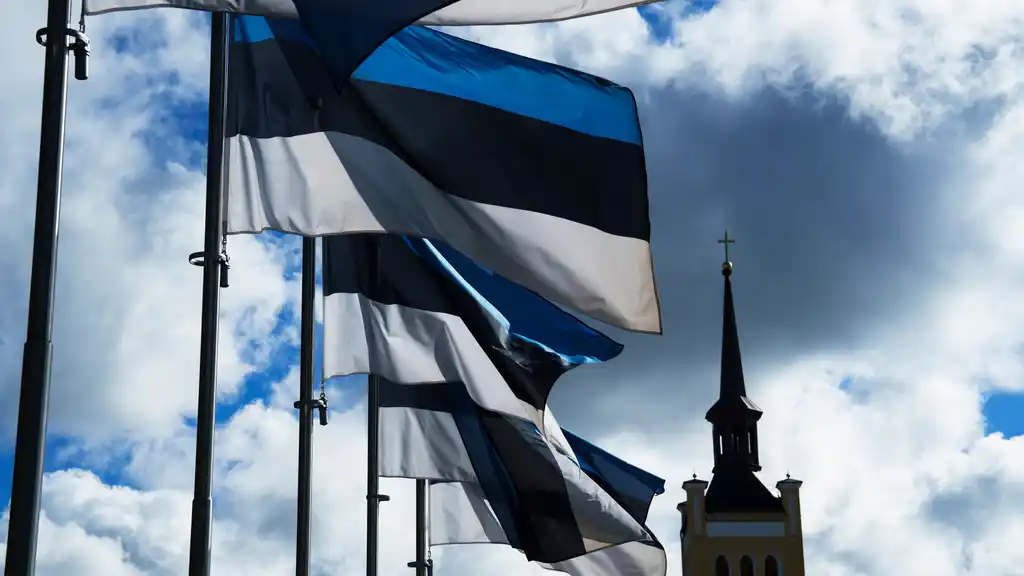
Estonian national flags flutter on Freedom Square, in the background is St. John’s Church, Tallinn, Estonia, September 1, 2022. AP/Pavel Golovkin
According to Margus Tsahkna’s Twitter account
The Estonian authorities are considering a full closure of the Värska–Saatse road, known as the Saatse Boot, which partly crosses Russian territory. This position was expressed by Estonia’s Foreign Minister Margus Tsahkna in a post on X. The stance is supported by statements about changes in the country’s long-term transport policy.
According to Tsahkna, reports of a “tense situation” at the border are exaggerated. He noted that on October 10 seven armed Russian servicemen were spotted on the highway, prompting the government to temporarily halt traffic to prevent possible incidents.
“reports of “tense situation” at the border are exaggerated.”
– Margus Tsahkna
In the long term, Estonia plans to completely abandon this road. The alternative route bypassing Russian territory is already in operation, and a new path is at the construction stage. Tsahkna described the road’s current use as a “historic anomaly”.
“historic anomaly”
– Margus Tsahkna
“There is nothing acute happening at the border. The Russians are acting somewhat more noticeable than before, but the situation is under control,” the minister added.
As a reminder, on October 10 the Estonian Police and Border Guard Board (PPA) decided to close the 178 Värska–Saatse highway segment due to heightened activity by Russian border guards on the border territory. The Värska–Saatse road was built back in Soviet times and crosses Russian territory twice: one segment is 30 meters long, the other 1 kilometer. Vehicle traffic is allowed without stops, and pedestrian traffic is not present.
Context and the Future Orientation of Transport Policy
The announced changes are driven by Estonia’s aim to reduce dependence on Russian infrastructure and increase border security. Work on constructing bypass routes and developing alternative paths that preserve transport convenience for people and businesses is already underway, reducing risks associated with the geopolitical situation.
The Värska–Saatse road was built toward the end of the Soviet era, and in modern conditions its use is increasingly questioned. Estonia’s official position speaks of redirecting the transport system toward safer and more independent routes to avoid potential difficulties arising from the proximity to Russian territory.
As new routes advance and existing bypass routes are deployed, the Estonian government hopes to create a stable and safe transportation network that ensures normal connectivity between regions without the need to cross Russian border zones.
Don’t miss other news:
